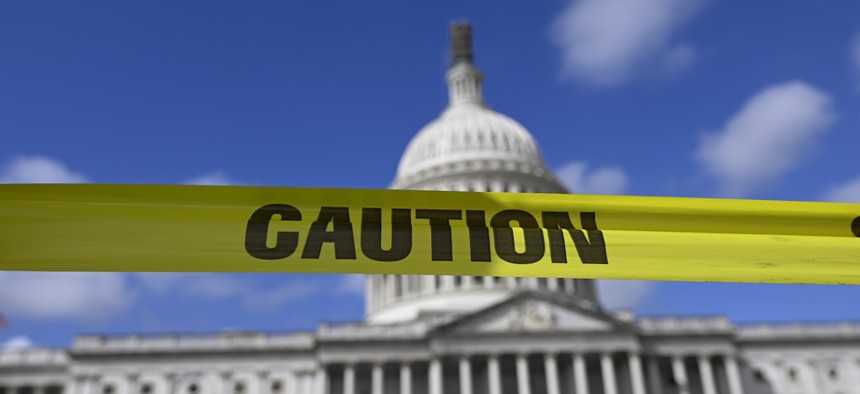
Impacted agencies employ about 600,000 employees, or slightly more than one-fourth of the federal workforce. Celal Gunes/Anadolu Agency via Getty Images
75,000 federal employees are facing furloughs this week
See who would be sent home if the government shuts down late Friday evening.
Update Feb. 28 at 5:56 pm: Congressional leaders on Wednesday reached a tentative agreement to avert a shutdown.
The federal agencies facing a shutdown threat later this week would send home more than 75,000 employees if Congress fails to enact funding in the next two days, furloughing them with only the promise of backpay.
An additional 500,000 workers would remain on the job, either because they are funded through mechanisms other than annual appropriations or their jobs are deemed necessary to protect life and property. If Congress fails to take action by the March 1 deadline, four of the 12 annual must-pass spending bills—those funding the departments of Agriculture, Energy, Housing and Urban Development, Transportation and Veterans Affairs, as well as related agencies including the Nuclear Regulatory Commission and Interior Department’s Bureau of Reclamation—would expire. The remaining agencies are facing a March 8 deadline.
The impacted agencies employ about 600,000 employees, or slightly more than one-fourth of the federal workforce. About 13% of those would face furloughs, according to the contingency plans each agency must maintain and most recently updated before the shutdown threat last October. That is a lower furlough rate than the entire government, which would furlough about 34% of employees.
The Veterans Affairs Department, the second largest agency in government, would keep 96% of its employees working. VA Secretary Denis McDonough said while all health care services and benefits administration would continue normally under a shutdown, veteran outreach, cemetery maintenance career counseling and other activities would cease.

Top lawmakers said following a meeting with President Biden on Tuesday they were close to a deal and all sides were committed to avoiding a shutdown. They reiterated on Wednesday that they were closing in on an agreement, but would likely need to pass another series of stopgap continuing resolutions to stave off a funding lapse. With just two days until the current CR expires, lawmakers will have to agree to work on an expedited timeline to move such a bill if one is presented.
Senate Majority Leader Chuck Schumer, D-N.Y., said on the floor Wednesday that his colleagues should “be ready to act quickly when the time comes.”
The White House, through the Office of Management and Budget, maintains some latitude in the exact consequences of a shutdown. Employees sent home on furlough, like excepted staff, will miss their paychecks for as long as agencies remain closed. After the record-setting 35-day shutdown that ended in 2019, however, all federal employees are now guaranteed backpay.
If the shutdown were to continue into the second deadline, an additional 750,000 federal workers would be furloughed. Even if Congress is able to temporarily stave off a shutdown with short-term bills, some federal employees could still face furloughs later this year—without the promise of backpay.
Under a provision of the 2023 debt ceiling law, a CR that goes into May would force devastating, across-the-board cuts that would likely require employee furloughs and significant disruptions to agency operations. Already, several agencies have implemented policies to adapt to budget shortfalls.







